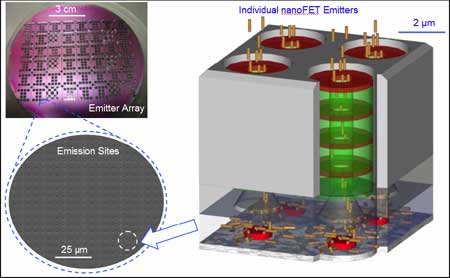
One of the things that makes travel both entertaining and exasperating is the assurance that the best laid plans will come up against events beyond your control. Thus I arrived at Milan’s Malpensa airport in plenty of time for my Delta flight, only to be told that the flight had been canceled. But Delta moved quickly on setting me up with an Alitalia flight to New York that left only thirty minutes after the first had been scheduled to leave, and after two more connections (and a twenty-three hour day on the move) I arrived back home. The photo is a shot of the streets of Aosta one early morning, from a walk I took on the last day to remember it by.
I returned with a satchel full of notes, the conference proceedings, numerous business cards and the world’s worst back-ache, a consequence of trying to move too fast in crowded airports with laptop and luggage. While the latter heals, I’ve also decided not to try to move through the Aosta material in one go — there’s too much of it, and too many papers I want to tell you about. So I’ll fold in the Aosta talks with a gradual return to other news items. Tomorrow, for example, I want to discuss a potential mission to Haumea, the curious object that may have much to tell us about the composition of the outer Solar System. So let me sort my notes and we’ll discuss it.
For today, a return to the news suggests a look at an article on the msnbc site discussing spacecraft at the nanotech level. This one caught my eye because of its reference to ‘needle-sized spacecraft.’ Robert Freitas was the one who told me about the ‘needle’ starship, a tiny vessel packed with nanotechnological assemblers that, arriving in a destination system, could use raw materials from asteroids there to build a scientific station for analysis and data return. I mentioned this idea in a recent Washington Post story, and in the current article, work at the University of Michigan using a new kind of thruster comes into play, with possible interstellar ramifications.
From the story:
The technology is called a “nano-particle field extraction thruster,” or nanoFET. The tiny thrusters that work much like miniaturized versions of massive particle accelerators. The device uses a series of stacked, micron-thick “gates” that alternate between conductive and insulating layers to create electric fields. These small but powerful electric fields charge and accelerate a reservoir of conductive nanoparticles, shooting them out into space and creating thrust.
The engine is evidently etched onto silicon via micro-electromechanical systems technologies, with tens of thousands of accelerators fitting into a tiny area. Translate very small effects into constant acceleration over years of time and you could theoretically achieve something like the needle probe idea of Freitas, though Gilchrist does not talk about nanotechnology inside, but rather the propulsive force that will send the probe, whatever its payload.

Image: nanoFET characteristic size scales. Credit: University of Michigan Department of Aerospace Engineering.
Gilchrist’s Web site at the University of Michigan shows a bibliography with papers related to this topic, but most are at least six years old — I assume the site just needs updating. But a university page on NanoFET propulsion offers more, describing the new electric propulsion system as a way to “….utilize electrostatically charged and accelerated nanoparticles as propellant. Millions of micron-sized nanoparticle thrusters would fit on one square centimeter, allowing the fabrication of highly scaleable thruster arrays.” Obviously not suitable for launch to orbit, these field emission thrusters are intended for acceleration and attitude control.
The page offers a look at how the system works:
Conductive nanoparticles would be transported to a small liquid-filled reservoir by a micro-fluidic flow transport system. Particles that come into contact with the bottom conducting plate would become charged and pulled to the liquid surface by the imposed electric field. If the electrostatic force near the surface can cause charged nanoparticles to break through the surface tension, field focusing would quickly accelerate the particles through the surface. Once extracted, the charged nanoparticles would be accelerated by the vacuum electric field and ejected, thus generating thrust.
So we now know to keep an eye on the Plasmadynamics & Electric Propulsion Laboratory at Michigan, whose concept would offer a highly efficient engine — and one with variable specific impulse — that should be scalable for a wide range of future space missions. nanoFETS are said to be able to adjust their specific impulse over a range from 100s to 10,000s with a high efficiency range throughout the entire specific impulse regime. A useful paper for learning still more about them is Liu et al., “Nanoparticle Electric Propulsion for Space Exploration,” American Institute of Physics 978-0-7354-0386-4/07, available online.
One more thing: The Plasmadynamics & Electric Propulsion Laboratory at Michigan offers an updated list of publications here, a number of which (particularly the conference references) relate to the nanoFETS concept.


Thanks for the link Paul, that’s an interesting lab they got there at U. Michigan… like their vacuum tank!
Cheers, Paul.
Here is the actual link to the MSNBC article:
http://www.msnbc.msn.com/id/31665236/ns/technology_and_science-innovation/
And here is the link to the engine idea from the Next Big Future blog:
http://nextbigfuture.com/2009/07/nanofet-nano-particle-field-extraction.html
Larry, thanks for the heads-up. I just fixed the errant link.
Apparently science fiction really does predict the future – in Arthur C Clarkes Earthlight, spacecraft are propelled by ion drives using as reaction mass lunar dust fine enough to flow like water.
That’s some very encouraging news, and here I’ve been telling my kids that any kind of real starflight is at least a century away. By the way, I just got the Van Pelt book. Looks to be very thorough. Love your website and your book!
Don Bohan writes:
Thanks, Don, glad you’re with us! My own guess is that your estimate of a century or so for a true interstellar mission (i.e., expressly designed as a probe of another star) is about right, but there are many who disagree. See our interstellar bet at http://www.longbets.org/395.
hello all,very glad to have everybodies input! i myself say,the first interstellar mission may be launched imho,as soon as 2075! it is wonderful to see all the thought and research that has already been done on these subjects. and ,lol, it is “only” 2009! thank you your friend george
http://blogs.discovermagazine.com/sciencenotfiction/2009/07/16/would-an-electric-rocket-ship-have-zero-emmissions-if-it-goes-90-of-the-speed-of-light-do-we-care/
Firing Off Charged Nanoparticles Might Allow Spaceships to Move at Near-Light Speed
Maybe it’s because nanoFET sounds like Boba Fett, but the name just screams “science fiction” to me. The device is still in very early stages of development, but it could theoretically propel spaceships into the vicinity of light speed. And getting close to light speed means going to other solar systems, and THAT means a science fiction-like reality. So work with me here.
If a nanoparticle field emission thruster (the aforementioned NanoFET) has been a subject of investigation for University of Michigan electrical engineer Brian Gilchrist for several years now. Gilchrist, joined by a team of scientists, has published and presented papers (pdf) at conferences (pdf) around the country, trying to show the theory of how electronically charged nanotubes could enable a spaceship to achieve astonishing speeds.
As Gilchrist envisions it, a nanoFET engine would be installed as a series of flat plates around our spaceship—let’s say the Millennium Falcon. So instead of the white glare of rockets pointed off the back of the Falcon as it flees TIE fighters, there would be a series of flat panels that resemble the silicon wafers that go into microchips (the MEMS production process would be very similar). Each panel would be covered in round discs, each 10 centimeters in diameter, which in turn would be comprised of thousands of emitters, each roughly 100 micrometers in diameter.
Each emitter works a bit like an tiny particle accelerator: The anode of the emitter charges the nanoparticles, which are then accelerated and then shot out a tube by a strong magnetic field generated by a stack of microchip-like components. “In that a particle accelerator uses an electrical field to propel charged particles to high speeds — that’s exactly what we’re doing,” Gilchrist told MSNBC.
Thanks to Newton’s third law, as the ship ejects particles in one direction, the ship moves in the opposite direction. Eject long, thin nanotubes for high-efficiency, slow acceleration; use short, thick nanotubes for better acceleration at greater cost of energy. The NanoFet could potentially eject nearly any type of nanoparticle that would take a charge.
The nanoFET is also remarkable flexible and scalable. A plate of nearly any size could be placed more or less anywhere on the object to be propelled, and each plate could be nearly any size. So instead of the Millennium Falcon merely being the fastest hunk of junk in the galaxy, it could also be astonishingly maneuverable, with smaller plates on different parts of the hull to establish tight turns and sudden changes in direction.
The only real downside is that nanoFETs are not imagined to provide the kind of high acceleration needed to break Earth’s gravity and escape orbit. But once in space, a ship equipped with nanoFET would have an extremely thin and lightweight engine with a commensurately compact fuel source. The nanoFET would be able achieve nearly constant acceleration. Do that for long enough, and speeds of 90 percent of light speed might become possible. Just think, if the Americans in Armageddon had a nanoFET powered space ship available to get out and intercept that asteroid, that whole Affleck-Armageddon fiasco could have been avoided. And wouldn’t we all want that?
July 16th, 2009 Tags: Ben Affleck, near-light speed travel